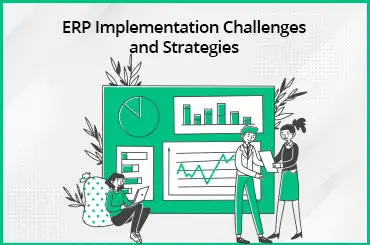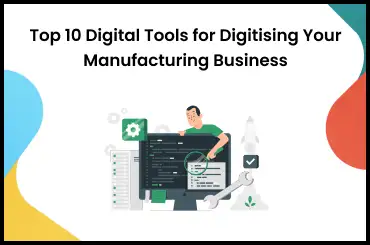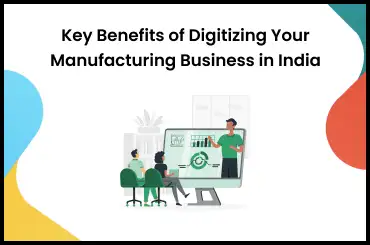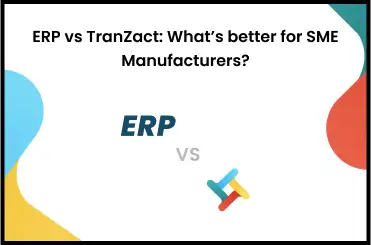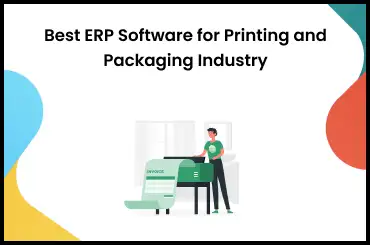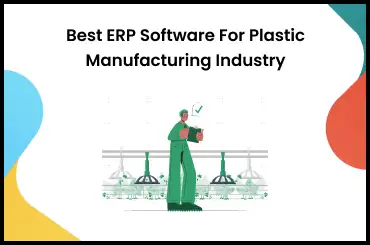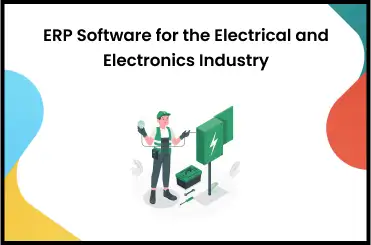On one hand, there are multiple ERP implementation strategy options, including steps, techniques, and best practices for selecting the system that fits the organization's needs. On the other hand, developing a new enterprise resource planning system can also be challenging. This should be addressed by developing an appropriate strategy and depending on ERP implementation services. This article provides guidelines for this transformation, an overview of some of the most common ERP implementation strategies and how to choose the best Manufacturing ERP Software that fits your business.
ERP Implementation Stages
ERP implementations typically involve six primary stages or phases. These are spread across months or, sometimes, years. Your planning process should begin before you decide which system to buy and continue after the launch. You should follow these steps:
1. Discovery and planning
The ERP implementation team consists of a diverse team of project managers that includes representatives from different business groups. This team gathers feedback on what the ERP system should do and how it should do it.
It is the team's responsibility to:
-
create a short list of vendors,
-
issue requests for proposals,
-
choose the ERP system,
-
manage different implementation strategies in ERP,
-
make sure that it meets all groups' needs and is widely accepted.
2. Design
Team members examine existing workflows and decide how they want to change them to the new system. Administrators and business process owners responsible for everyday operations must be flexible when changing their duties.
3. Development
During the design and development phase, the vendor works with the team to match business requirements and prepare other activities to prepare for installation. For example, preparing training materials and documentation.
4. Testing
It is important to test the system before it goes live and you must do a thorough examination. During this testing, you should note down details of how various employees will use the software.
5. Deployment
You can go live as soon as you have completed your configuration(design and development), data migration, and testing! Training should be a priority, and departments should select "brand ambassadors." A network of power users can be a valuable resource to departments.
6. Support
The project team provides user support, and the system should be upgraded and fixed regularly.
4 ERP Implementation Strategies
Here are four ERP implementation strategies:
1. Big Bang
With the Big Bang approach, all your staff and business functions are moved to the new system at once. This simplifies the implementation strategies of ERP process. This also optimises cost while allowing your company to take advantage of modern ERPs from day one. However, The risk is that it may be difficult to roll back, resulting in multiple failures.
2. Phased Rollout
The phased strategy revolves around modules. It is driven by pressing business needs such as legal requirements and strict timelines. This allows SMEs with limited resources to stay focused on important goals.
3. Parallel Adoption
With this strategy, the organization continues to use its current systems along with the new ERP for some time. The business can be moved back to the original system if there are problems. It is the least risky approach. Some users may also be able to adjust more quickly to the new system by using this approach.
4. Hybrid
This approach combines elements of both strategies above. For example, an organization may switch on core ERP modules in a big-bang approach and roll out other modules in phases.
How to Select an ERP Implementation Strategy
The following four major factors should be considered when choosing an ERP implementation strategy:
1. Organizational Size
Implementing an ERP system in a big bang strategy for SMEs is the best option because they can easily handle the upgrade of the entire organisation at one time. A phased rollout strategy should be considered if you own a large company with many functions and branches.
2. Cost
A big bang strategy can reduce project costs by speeding up setup and removing the need to maintain two different ERP systems.
3. Business Risk
For organizations focusing on risk management, it is best to phase or implement ERP in parallel. It will allow them to educate the team on the new system and apply it to their processes or return to their old system if the rollout fails.
4. Expected ROI
With the Big Bang strategy, ERP implementation can be improved without delay and without compromising ROI. A phased, hybrid, or pilot type of ERP implementation strategies can generate considerable ROI even if it focuses on the most important and profitable functions.
ERP Implementation Steps
It doesn't matter which implementation strategy an organization chooses. Most steps are the same. The organization has to set up the software, prepare the data for transfer, and complete detailed testing before introducing and supporting new user features.
An organization that uses a big bang strategy focuses equally on each step. As soon as the product goes live, it can concentrate only on support and any upgrades that may be required. Or it is possible to work on multiple steps together with a phased approach, depending on the organization's functions.
ERP Implementation Tips
To streamline your ERP implementation journey, keep the following points in mind. This is true whether you choose Big Bang implementation, phased rollout, or hybrid approach.
- Hire reputable consultants with proven track records.
- Identify realistic budgets for staffing, technology, and licenses.
- Plan the implementation steps, phases, and timeline.
- Provide staff and stakeholders with a clear understanding of the project scope.
- Put together a team of PMs, designers, developers, and quality assurance experts.
- Data should be cleaned before migration to the new ERP system.
- Provide user support and training to assist ERP implementation.
- Improve ROI by prioritizing key features that target high-value processes.
- Calculate your project's ROI and KPIs.
- Avoid reputational damage and fines by monitoring data security and regulations.
Choose the Best ERP Manufacturing Software With TranZact
An ERP system's purely technical components are part of the bigger picture. Implementing ERP depends on choosing the right implementation strategy, ERP software and methodology based on your organization's size, investment ability, risk tolerance, and expected ROI.
With TranZact, implementing an ERP strategy is easy. You can improve the impact of this powerful software solution across your organization, along with a solid adoption roadmap and best practices mentioned above.
FAQs on ERP Implementation
1. Why is ERP implementation strategy important?
Implementing ERP strategies aligned with the organisation’s goals and workflows involves steps, techniques, and best practices. ERP implementation strategies help increase ROI, reduce business risks, and overcome common challenges.
2. What are the different phases of ERP implementation?
ERP implementation and strategy is a six-part process that includes:
-
discovery and planning,
-
design,
-
development,
-
testing,
-
deployment,
-
support.
3. What are the five important implementation strategies?
Implementation requires five key components:
-
people,
-
resources,
-
structure,
-
systems,
-
culture.
A plan can only be activated with all components in place.
4. What is the ERP life cycle?
The Strategies for a successful ERP implementation life cycle is automating business processes using it. A project implementation process involves several stages: planning, analysis, design, implementation, transition, and operations.
5. What is ERP?
ERP is Enterprise Resource Planning. It is software that helps enterprises run their business by automating finance, human resources, manufacturing, supply chains, services, and procurement processes.
6. Why is ERP real-time?
Using real-time ERP insights, decision-makers can identify opportunities and challenges and spot patterns. Companies can stay ahead of the competition by responding quickly to market changes, improving processes, and taking advantage of favourable conditions through these strategies.







